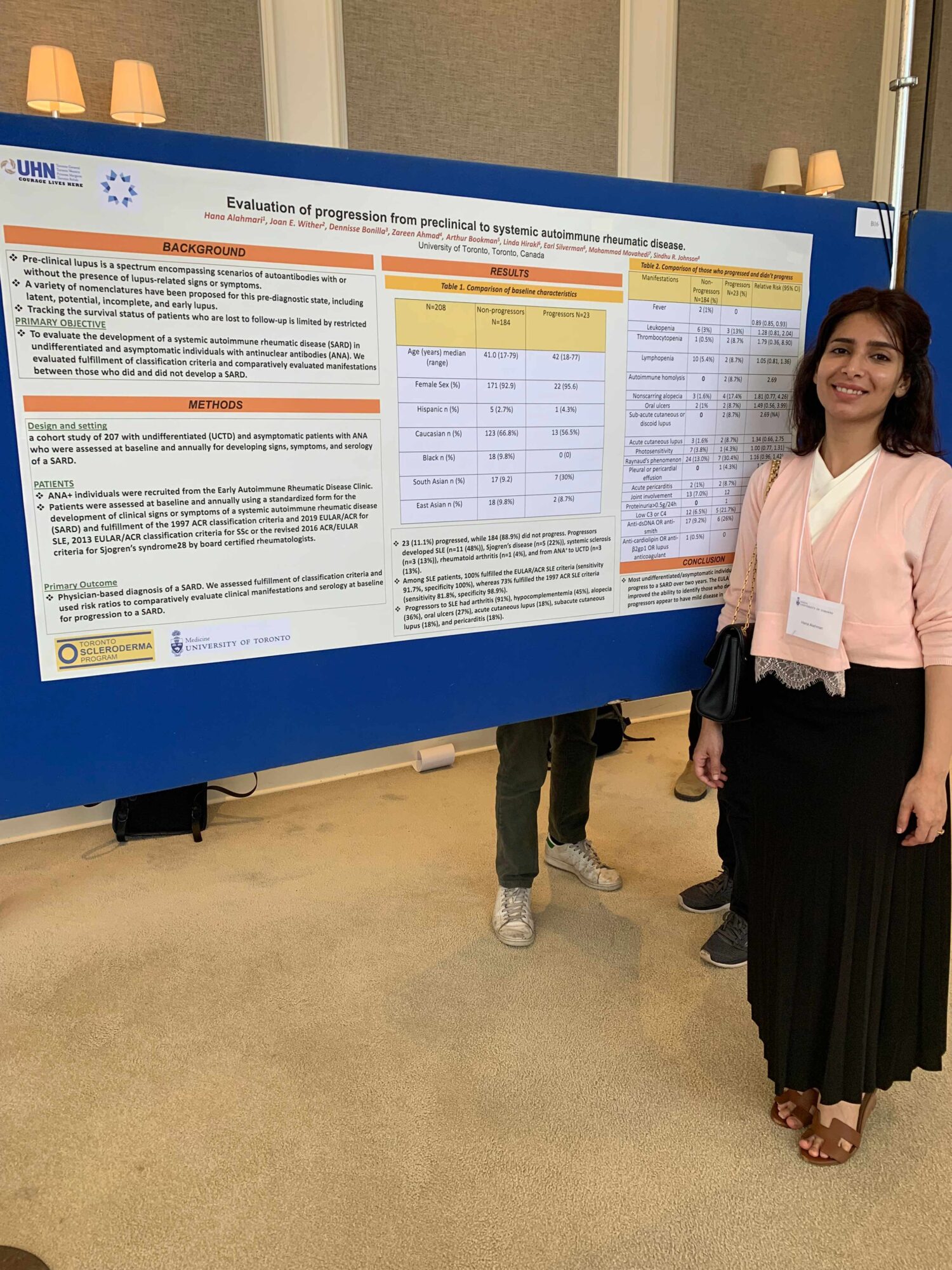
June is Scleroderma Awareness Month! UHN’s Schroeder Arthritis Institute is home to the Toronto Scleroderma Program, which provides multidisciplinary care, medical education and research across the scleroderma spectrum of diseases. Clinic research is helping reveal insights into the possible causes of scleroderma and the creation of entirely new treatment approaches.
At UHN, innovative patient care and research in scleroderma is overseen by world-renowned physician Dr. Sindhu Johnson – Medical Director of the Toronto Scleroderma Program – who provided answers about the disease, and discussed the importance of her fellowship program.

How do you pronounce scleroderma?
Sklair-oh-DUR-muh
What is scleroderma?
Also known as systemic sclerosis, scleroderma is a chronic progressive autoimmune disease of the connective tissue. It has no known cure.
What are the symptoms of scleroderma?
Scleroderma causes thickening of the skin leading to disfigurement of areas of the body such as the face and hands. It can also impact internal organs and in some cases, cause fatal damage to the heart, lungs, stomach or kidneys.
What causes scleroderma?
As with many autoimmune diseases, there is probably no single specific cause for scleroderma, but rather a complex series of issues that lead to the disease. There is likely both a genetic component as well as an environmental component.
Who is at most risk of scleroderma?
The onset of this disease is most frequent between the ages of 25 and 55, and affects three to four times more females than males.

How does scleroderma affect quality of life?
The majority of people with scleroderma will see changes to their skin, typically in the form of body areas that harden and tighten, resulting in restricted movement. This can result in significant challenges to day-to-day living. All the things most take for granted can feel insurmountable. Tasks that are ordinarily simple such as buttoning clothes is laborious and often not possible.
How is scleroderma treated?
While there is currently no cure, there have been major advances in treating and understanding scleroderma over the past several years. This includes the identification of new drug discovery targets, and the exploration of ways to stop fibrosis – or a build-up of scar tissue or hardening of the skin – which is major cause of mortality in scleroderma patients.
What is the importance of the Toronto Scleroderma Program’s fellowship program?
Four scleroderma clinical research fellows have graduated from the Toronto Scleroderma Program this year. My scleroderma fellowship program is bigger than most rheumatology programs worldwide, with most centres graduating one to two rheumatologists per year. Fellow Dr. Hana Alahmari is completing an MSc in Clinical Epidemiology at the Institute of Health Policy, Management and Evaluation at the University of Toronto (U of T), and fellow Dr. Aos Aboabat is completing certification in Quality Improvement at U of T.


